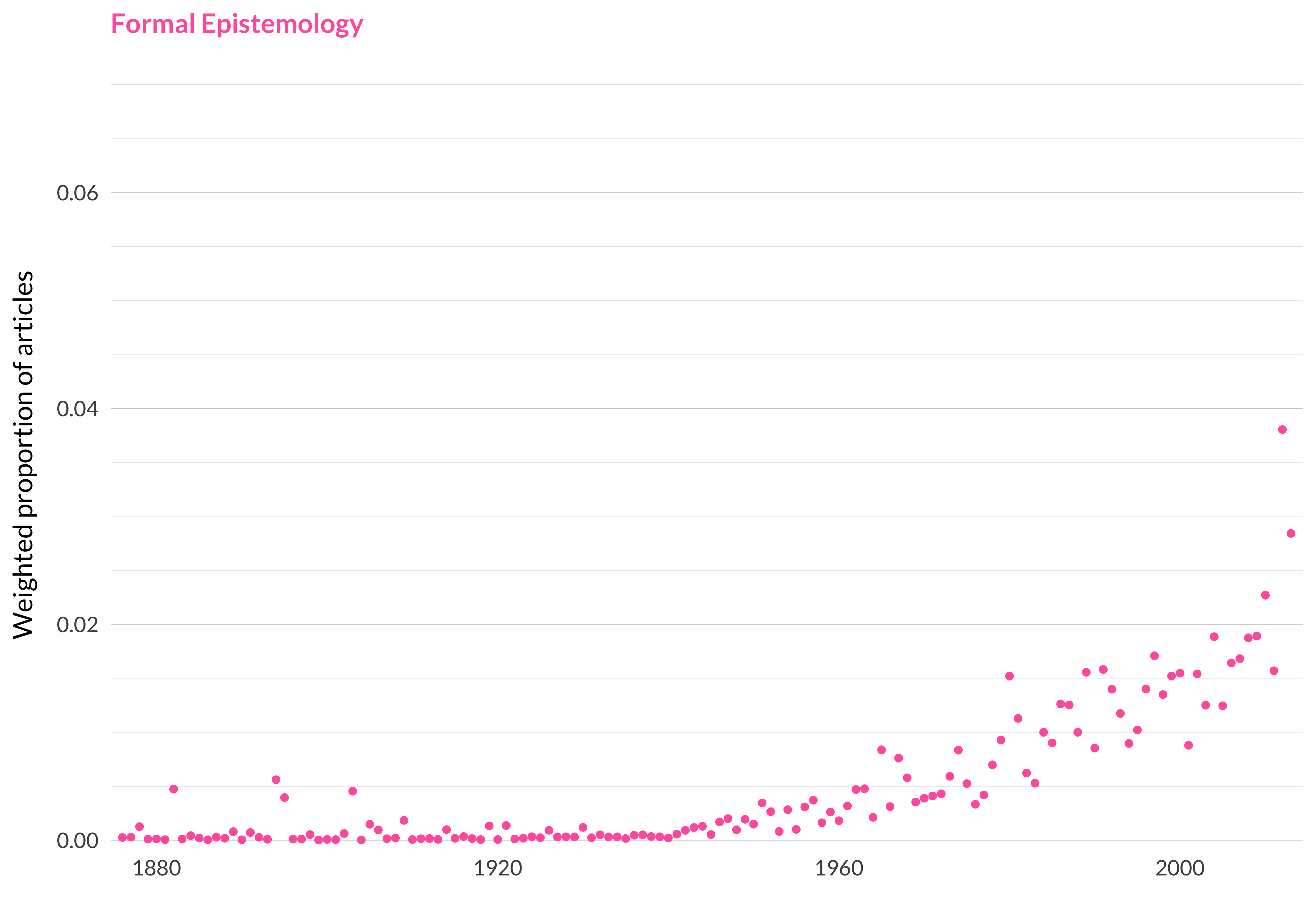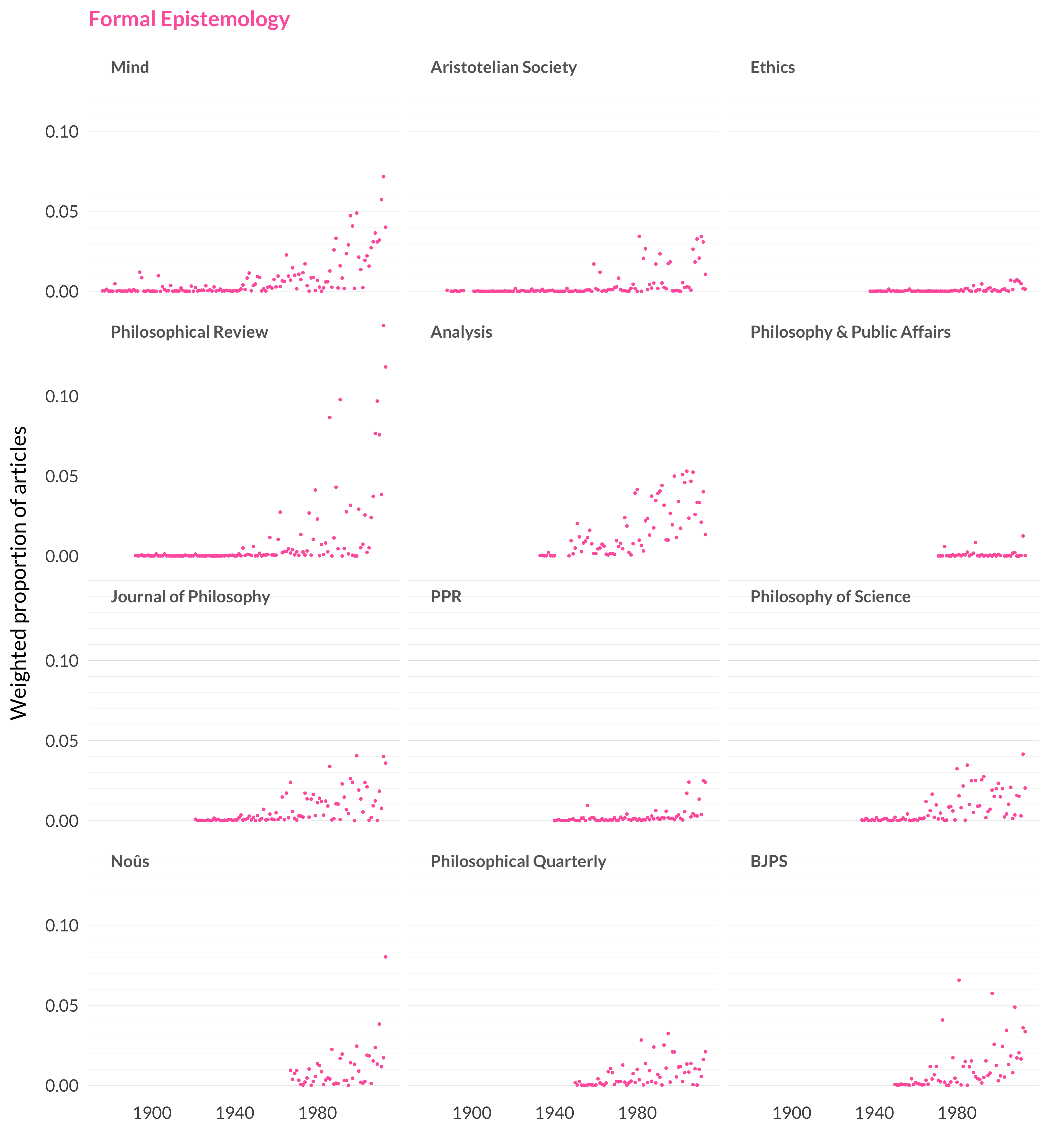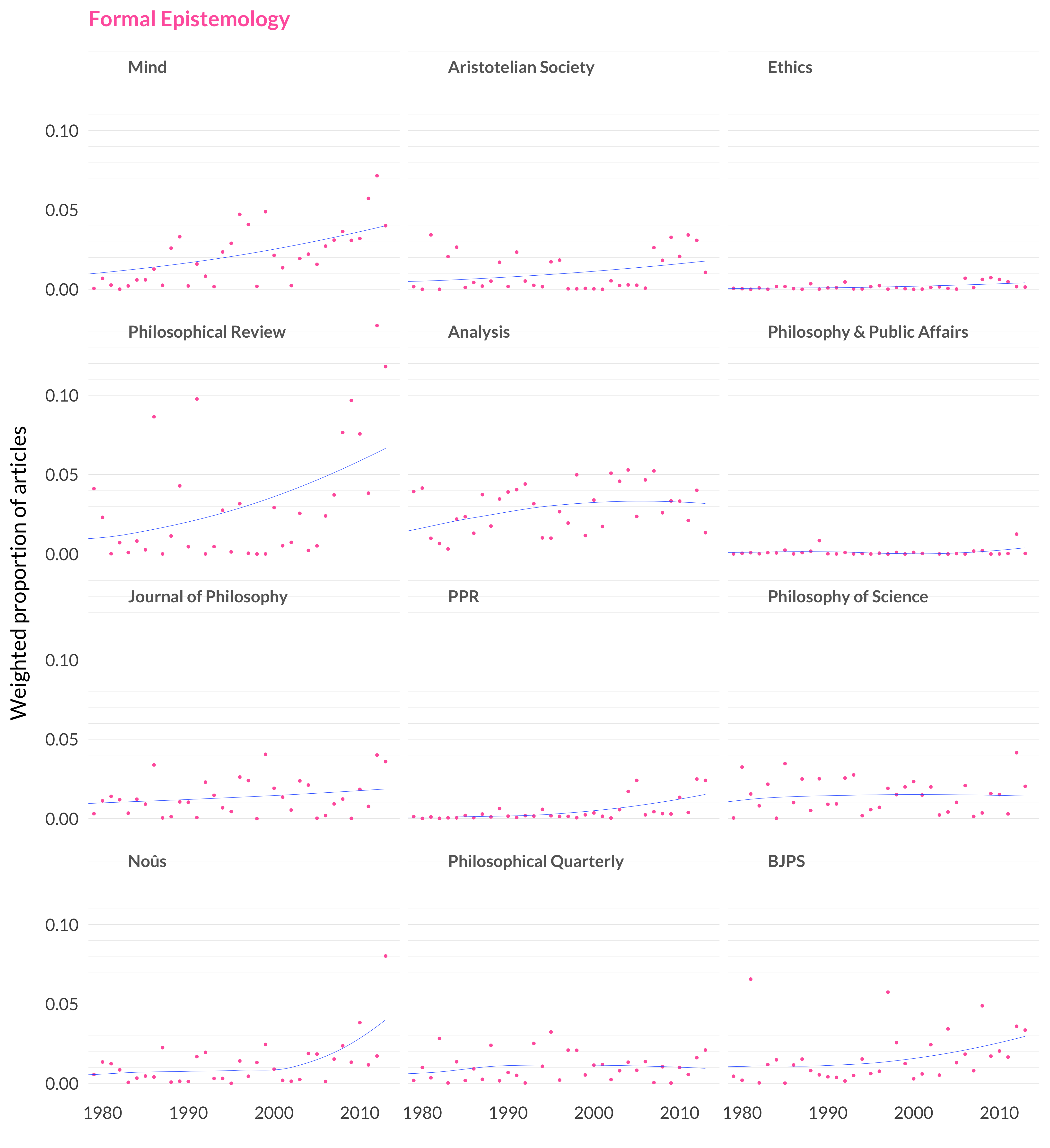2.84 Formal Epistemology
Category: Epistemology
Keywords: credences, subjunctive, dutch, credence, bet, conditionals, conditionalization, conditional, ticket, jeffrey, indicative, lottery, win, heads, consequent
Number of Articles: 375
Percentage of Total: 1.2%
Rank: 38th
Weighted Number of Articles: 255.4
Percentage of Total: 0.8%
Rank: 64th
Mean Publication Year: 1994.2
Weighted Mean Publication Year: 1992.5
Median Publication Year: 1997
Modal Publication Year: 2012
Topic with Most Overlap: Chance (0.048)
Topic this Overlaps Most With: Decision Theory (0.0264)
Topic with Least Overlap: Heidegger and Husserl (2e-04)
Topic this Overlaps Least With: Life and Value (0.00014)

Figure 2.192: Formal epistemology.

Figure 2.193: Formal epistemology articles in each journal.
Comments
When I was a graduate student, this was the stuff I worked on—indicative conditionals and probabilistic models of rational agents. At the time, I thought of myself as working at the intersection of philosophy of science and philosophy of language. It was only when I started applying for jobs that I thought, well, since what I’m doing is working on stuff about rationality, maybe I should just insist that it counts as epistemology and see if I get away with it. Twenty-something years later, no one in my position has such worries; this is clearly part of epistemology.
One way to see how much it has changed is to look at where the papers are being published. Here’s a version of the facet graph above but restricted to the period since 1980, and with trendlines added.

Figure 2.194: Recent formal epistemology.
I think this makes clear something that was intuitively plausible: that it’s the generalist journals leading the charge here. As work on Bayesianism has moved from being philosophy of science to epistemology, it has become a much bigger part of what Mind, Philosophical Review and Noûs have published. (Though, to be sure, a lot of what’s happened in Noûs has been since 2013.) I’m a little surprised there isn’t more movement on the Analysis graph; I would have guessed the Sleeping Beauty debate alone would have pushed it higher. But otherwise this looks like a case where the general picture—that this went from something of a specialist topic to a “generalist” one—is borne out by the data.